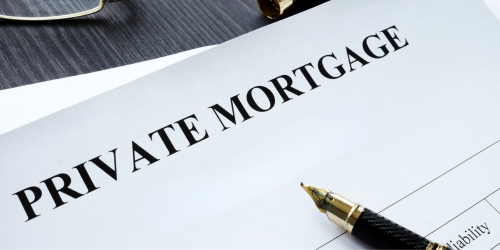Understanding the Trigger Rate for Variable Mortgages
At Nazarian Law, we appreciate the complexity of real estate transactions, especially when they involve financial products like variable-rate mortgages. An integral part of these mortgages is the “trigger rate,” a term that might be unfamiliar to many. The trigger rate is essentially the interest rate at which your variable-rate mortgage transitions from fixed payments to variable payments. Understanding how it works and its impact can be crucial when deciding which mortgage product is right for you.
What is a Mortgage Trigger Rate?
A mortgage trigger rate is a specific interest rate tied to a variable-rate mortgage. When the interest rate surpasses this trigger point, it triggers changes to the mortgage’s payment structure. Up to this point, the payments have been fixed, but after crossing this rate, the payments become variable. This means your mortgage payments can increase or decrease based on fluctuations in the market interest rate. Understanding your mortgage’s trigger rate is important as it can impact your financial planning and long-term budgeting.
What Happens if I Hit My Mortgage Trigger Rate?
Upon hitting the mortgage trigger rate, you can expect a shift from fixed payments to variable payments. While it can be beneficial if market interest rates decrease, there is a risk that payments can rise, potentially causing financial strain. In this event, it’s essential to reassess your budget and consider options like refinancing or potentially switching to a fixed-rate mortgage.
Should you need recommendations on speaking with a mortgage broker, please feel free to reach out to the Nazarian Law team and we would be happy to connect you with our recommended mortgage brokers for your particular situation.
How is the Mortgage Trigger Rate Calculated?
The calculation of the mortgage trigger rate might seem like a complex task, but understanding this can provide clarity in your financial planning. Although we strongly recommend consulting your mortgage broker or lender for precise calculations and personalized advice, the following steps can give you a rough idea of your trigger rate:
Begin by figuring out the amount charged for each of your mortgage payments. This could be weekly, bi-weekly, or monthly payments.
Next, determine the number of payments you are expected to make each year. If you make bi-weekly payments, for example, this number would be 26 (52 weeks divided by 2).
Find out the outstanding balance on your mortgage – that is, the amount you still need to repay.
Now that you have these essential pieces of information, you can approximate your trigger rate using the following formula:
(Payment Amount x Number of Payments per Year / Outstanding Mortgage Balance) X 100 = Estimated Trigger Rate %)
Here’s how to apply the formula:
- Multiply your payment amount by the number of payments you make in a year.
- Divide the resulting figure by the remaining balance on your mortgage.
- Multiply the outcome by 100 to convert the figure into a percentage.
This calculation should give you a ballpark figure for your trigger rate. Please remember that this is an estimate. The actual trigger rate could vary based on other factors and changes in market conditions. Therefore, always consult with your mortgage broker to get an accurate understanding of your unique mortgage circumstances.
Book a Discovery CallTrigger Rate vs. Trigger Point: An Examination
Though the terms “trigger rate” and “trigger point” are often used interchangeably, they refer to two different things. The trigger rate pertains to the specific interest rate that prompts a shift in payment structure, while the trigger point refers to the moment when this shift happens. Both concepts are important in understanding how a variable-rate mortgage operates and how it might affect your financial future.
Variable-Rate Mortgages with Fixed Payments: Exploring the Role of Trigger Rates
Variable-rate mortgages (VRMs) with fixed payments combine potential savings from variable rates and payment stability of fixed-rate mortgages. The trigger rate plays a vital role here.
Your interest rate with a VRM fluctuates with the lender’s prime rate. If rates decline, you save on interest costs. However, if rates rise, your interest payments increase. Despite these fluctuations, a VRM with fixed payments keeps your mortgage payments constant.
This stability is possible due to the trigger rate. As long as the variable rate stays below this trigger, your payments remain unchanged. However, once the variable rate exceeds the trigger rate, your payments will increase. Essentially, the trigger rate acts as a safeguard against dramatically higher payments.
This balance of potential savings and payment certainty makes VRMs with fixed payments attractive to some borrowers. However, their suitability largely depends on your financial stability, risk tolerance, and future rate forecasts. With today’s rising interest rates, it is likely that trigger rates may result in higher mortgage payments.
Market Statistics on Canadians reaching their Trigger Rate
An important consideration in the variable-rate, fixed-payment mortgage landscape is understanding the share of borrowers who have reached their trigger rate. This figure can offer key insights into the current state of the mortgage market and the potential challenges borrowers may face.
According to data from the Bank of Canada, as of the end of October 2022, approximately 50% of borrowers with a variable-rate, fixed-payment mortgage, accounting for nearly 13% of all Canadian mortgages, have already reached their trigger rate. This number is set to rise if there are further increases in banks’ prime rates. It’s important to note that these figures don’t account for any preemptive actions borrowers might have taken to mitigate the effects of reaching the trigger rate.
In contrast, a report by National Bank Financial economists Stefane Marion and Daren King presents a higher estimate. As of January 2023, they estimated that between 73% and 80% of variable-rate mortgage holders with fixed payments originated between 2020 and 2022 have hit their trigger rate.
These divergent figures underscore the difficulty in estimating the precise percentage of borrowers who have reached their trigger rate. Various factors, such as timing, actions taken by borrowers, and changes in interest rates, can significantly influence this figure. The situation serves as a reminder for borrowers to stay informed about their mortgage terms and the broader market dynamics, and to consult with a trusted mortgage broker or the Nazaian Law team when necessary.
Book a Discovery CallWhat to Do if You’re Concerned About Reaching Your Trigger Rate
If the thought of hitting your mortgage trigger rate has you worried, it’s crucial to take proactive steps. Here’s a condensed guide to help you navigate this concern:
- Understand the Impact: Grasp the implications of hitting your trigger rate—transitioning from fixed to variable payments. A budget “stress test” can help assess potential changes to your finances.
- Think About Refinancing: You might consider refinancing your mortgage to a fixed rate or a different variable-rate product with a lower trigger rate. But remember, this process does come with associated costs.
- Consider a Buffer Fund: Establish a savings fund to cover potential increases in mortgage payments, offering you financial security.
- Stay Informed: Keep an eye on the market and interest rate trends. This will provide you with a better understanding of when you might hit your trigger rate.
This guide aims to give a basic understanding, but everyone’s situation is unique. For specific guidance tailored to your circumstances, don’t hesitate to schedule a Discovery Call with Nazarian Law. We’re here to assist with your real estate legal needs. We can also refer you to a mortgage specialist that our team works with.
Adjustable-Rate Mortgage vs. Variable-Rate Mortgage: A Comparison
Adjustable-Rate Mortgages (ARMs) and Variable-Rate Mortgages (VRMs) are two types of home loans that differ in how their interest rates adjust. ARMs have an initial fixed-rate period, then the rate adjusts periodically, often with a cap on the increase. In contrast, VRMs have rates that can change at any time, mirroring the lender’s prime rate. The total payment often remains constant unless the prime rate exceeds a certain limit or “trigger rate”. Your choice between an ARM and VRM should align with your financial situation, risk tolerance, and market predictions, and it’s always wise to consult with a mortgage specialist.
How Can You Avoid the Mortgage Trigger Rate?
Avoiding the trigger rate might seem like a challenging task, especially when it’s difficult to predict interest rate movements. However, there are strategies that can mitigate this risk. Firstly, consider your repayment structure. Making more frequent or larger repayments can decrease your outstanding balance, indirectly affecting your trigger rate. Secondly, consider the type of mortgage product that suits your needs. A fixed-rate mortgage, for example, provides a predictable repayment structure and avoids the uncertainty of a trigger rate. Lastly, refinancing your mortgage could be an option, particularly if market conditions have improved or your financial situation has changed. Since these strategies can have significant legal and financial implications, we recommend that you get in touch with our team to assist you in finding a mortgage specialist or help process your mortgage refinance. Our team can help you understand these complexities and guide you in making an informed decision that suits your specific needs and goals.
Understanding Principal and Interest on a Mortgage Before Trigger Rates
Understanding the breakdown of your mortgage payments into principal and interest components is crucial. This understanding can help you determine how much of your payment is going towards the loan balance (principal) and how much is covering the cost of borrowing (interest). Familiarity with these elements can better prepare you for potential changes when the trigger rate is hit.
Remember, while we strive to provide the most up-to-date and accurate information, financial and real estate matters can be complex and vary greatly based on personal circumstances and current market conditions. We highly recommend seeking personalized advice from financial and legal professionals when navigating real estate transactions and mortgage products.
Book a Discovery Call——————————————————————————
Disclaimer: The content provided in this article or blog is for informational purposes only. It is not intended to constitute legal advice or to replace the advice of a qualified legal professional. While we strive to provide accurate and current information, the law is complex and constantly changing, and each person’s circumstances are unique. Therefore, you should not rely on this information as a substitute for professional legal advice. This information does not create an attorney-client relationship between you and our law firm. We strongly recommend that you consult with a qualified attorney in your jurisdiction to understand your legal rights and obligations. Always seek legal advice before making any decisions that may impact your legal rights or obligations.





